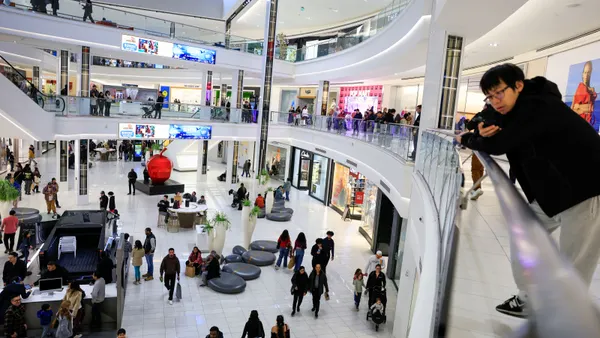Dive Brief:
- Online grocery and home goods seller Brandless hasn’t yet become habit-forming with consumers, according to data compiled by Recode. Just 20% of shoppers who placed an order on the site in the fourth quarter of 2017 placed another order a quarter later, according to data from Edison Trends. Figures from Second Measure show just 11% of shoppers that placed an order last fall did so again a year later.
- Brandless sees lower retention rates and lower order averages than established players such as Walmart, Target and Amazon, as well as e-commerce competitors Instacart and Thrive Market. The company told Recode its internal figures show the company is succeeding.
- The company secured $240 million in funding from SoftBank’s Vision Fund this summer and is now valued at more than $500 million.
Dive Insight:
Brandless’ low prices and high-quality, stylishly packaged better-for-you products have garnered a lot of press and investment capital. But what seemed novel a year ago when the company burst onto the scene is now facing a growing lineup of competitors.
This includes some heavy hitters with a lot more brand recognition. Target just undercut Brandless with Smartly, a line of 70 home goods priced at less than $2 each. As Recode noted, Amazon is building out its private label offerings including its Basics line, while Walmart’s Jet.com has come out with Uniquely J, its own line of hip, millennial-focused snacks, beverages and home products.
In addition to lower brand recognition, Brandless doesn’t have a deep bench of products to entice consumers, unlike Target, Walmart and Amazon. This reduces shoppers’ reliance on the site, which can tamp down loyalty.
It appears Brandless gets a lot of shoppers who dabble in the company’s offerings. As Recode points out, the average order size during this year's third quarter was $34 — well below competitors like Thrive Market, which saw a $75 average, but closer in line to Amazon, which saw a $37 average and much deeper engagement from its shoppers.
It’s important to note that Brandless is not some major outlier in its inability to convert visitors into regular shoppers. Just 25% of Instacart shoppers who ordered late last year were still doing so by this year’s Q3, while 19% of Thrive Market shoppers had done the same, according to Second Measure data.
Brandless has invested in some savvy marketing and innovation, including a television ad, a pop-up store in Los Angeles and a clean beauty line. The company also can count on growing interest in online shopping, especially in the nonperishable goods it specializes in.
But even with sales migrating online, it still pays to have a brick-and-mortar foundation these days. That’s actually something Brandless has considered, co-founder Ido Leffler told Food Dive in a recent interview — but it’s not in the immediate plans yet.
Brandless' focus on simple, sleek and cheap resonates with consumers, but so does a recognizable name like Target, Amazon and Walmart that also happens to have deep financial pockets. Brandless likely is benefiting from its Softbank investment, and perhaps can withstand losses for the foreseeable future, but the company will have to do more to draw repeat customers or it may need to tap another round of funding.















